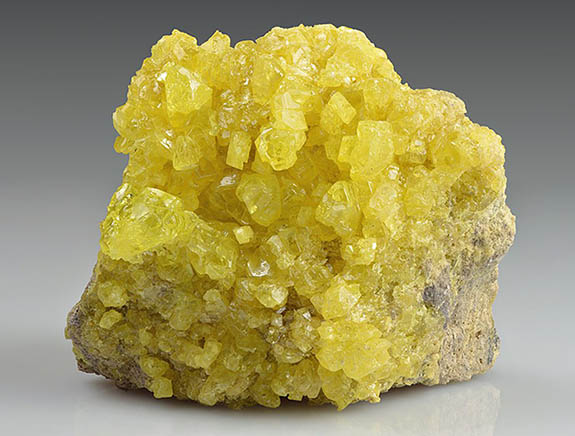About 150 million miles away on the surface of Mars, NASA's one-ton Curiosity rover accidentally rolled over the top of a nondescript white rock, busting it apart to reveal the beautiful yellowish-green crystals of pure sulfur that were inside.
While NASA scientists had long known about the presence of opal on the Red Planet, the discovery of elemental sulfur was a complete surprise.
“I think it’s the strangest find of the whole mission and the most unexpected,” Ashwin Vasavada, Curiosity project scientist at NASA’s Jet Propulsion Laboratory, told CNN. “I have to say, there’s a lot of luck involved here. Not every rock has something interesting inside.”
The discovery took place on June 7, the 4,208th Martian day of Curiosity's mission, which began in August of 2012. After accidentally smashing the rock, the rover used an instrument on the end of its robotic arm, called the Alpha Particle X-ray Spectrometer, to determine its composition.
Vasavada described the Martin pure sulfur crystals as having a “beautiful, translucent and crystalline texture.”
The most beautiful specimens of sulfur crystals on Earth have a bright yellow appearance, similar to citrine. The major difference is that citrine has a rating of 7 on the Mohs scale of mineral hardness and sulfur rates a relatively soft 2.5. Sulfur is similar in hardness to a cultured pearl and can be scratched with a fingernail.
If you believe that Martians may have once inhabited the fourth planet from the Sun, it's unlikely they were making their sulfur crystals into jewelry. The material is extremely brittle and difficult to facet. What's more, when moisture (even perspiration) or heat is applied to the stone, it smells nasty — like rotten eggs.
NASA's Jet Propulsion Laboratory reported that the collection of fragments from the smashed rock measured about 5 inches (13cm) across. They hadn't expected pure sulfur to be present on the planet and now they are trying to decipher how sulfur contributed to Mars' evolution.
“No one had pure sulfur on their bingo card,” Vasavada told CNN.
On Earth, sulfur occurs naturally in the environment and is the fifth most abundant element by mass. Pure sulfur is often connected with volcanic activity.
Back in January of 2023, a research team analyzing archived data from NASA’s Curiosity rover identified a “halo” of networks along the Martian landscape that are likely rich in opal. Since the iridescent gem is formed from water and silica, the findings provided additional evidence that the Red Planet had a watery past that could have supported microbial life.
Credits: Mars sulfur crystals image by NASA/JPL-Caltech/MSSS. Sulfur crystal photo by Ivar Leidus, CC BY-SA 4.0, via Wikimedia Commons..